Rudolph “Rudy” Hoglund, the former Art Director for Time Magazine, responsible for designing 1,000 covers in his long career with Time, has been camping out some days of late at Lovettsville’s Back Street Brews Coffee and Tea House.
Rudy sits with a sketchpad at hand, and several other pads and implements in a nearby soft satchel, returning to one of his first loves, Rudy says, “just drawing things.”
Desiree Valentine, one of his first subjects said, “I agreed to be one of Rudy’s subjects because he’s a very special person, and he has such an intriguing background.”
Maureen “Mo” Morris said, “his story is just fascinating.”
Rudy is thin, erect, comfortably dressed, and soft-spoken, willing to discuss at length his adventures in the arts starting with an illumination that came over him when sitting in a classroom at Wilbur Wright Junior High School in Cleveland.
“I learned that people actually paid people to draw things,” said Rudy.
It may have seemed at time like a random walk through life, starting with pen and ink cartoons until he studied more formally at the Cooper School of Art.
At the Newspaper Enterprise Associates, he had the job of lettering dialogue balloons in “Alley-Oop” comic strips.
When Rudy’s job moved to New York, he took night classes at the School of Visual Arts, and attended a design class taught by Milton Glaser.
“After two semesters, I asked Milton if we could have lunch sometime,” said Rudy. Walter Bernard and Milton Glaser had re-designed a magazine, “More.” Rudy wanted to be the magazine’s Art Director and, after talking with Walter and the Magazine editor, he landed the position. Rudy said, “We weren’t doing so good, so I had to beg artists to do photographs and illustrations for credit lines. I got to do some illustrations myself.”
“You know Milton designed the slogan logo, the ‘I love NY’ slogan, substituting a heart pix for the word, ‘love,’ a messaging technique since widely copied,” said Rudy.
“Walter was working on a re-design for Time,” said Rudy, “and when Time went with the re-design, Walter took me with him as an assistant art director.”
The Time cover is the entre to the message within the magazine.
“We created some rules,” Rudy said, “to give the cover some consistency. Walter did the covers but then he started giving me the responsibility. I liked coming up with an image that told the guy walking past the newsstand what this issue was about.”
Rudy explained how he created some covers so that it wouldn’t be what anyone else had on their covers.
Robert Rauschenberg, born in Texas, was an artist of breadth, who studied at the Kansas City Art Institute and the Art Students League of New York, and was highly regarded for taking materials and objects and creating an imaginative combination.
That’s what Rudy was looking for, an artful collage by an established artist, to create a cover featuring Deng Ziaoping, the leader of China after Mao Zedong’s death in 1978, fairly considered both a reformer and a despot. Deng had quite a story and had been purged three times from the Communist Party before becoming the leader of China.
“I was a fan of Rauschenberg’s work,” said Rudy, “but to get to him I had to ask Robert Hughes at Time who covered art, and he said he could arrange it. I made the contact and went to Japan to meet Rauschenberg, arrived in Tokyo and drove somewhere to the East and waited at the hotel to see him. When we met, he asked if I wanted a drink of gin. I said yes and then realized there were glasses, a little bigger than a shot glass, lined up one after another on the windowsill running some distance across the room. Robert said, ‘they don’t have bottles,’ so it was by the glass.”
Now Rauschenberg had to create the art work and we had a deadline back in New York.
“I gave him some materials I had,” said Rudy, “and he found others, and it took about a week, and, when he wasn’t working, we got some time to be together. Finally, Robert finished, and I had a work, 2 ½ by 3 ½ feet, that I had to get back to NY to make our deadline. I had to show it at the airport for security. But that was no problem. I wasn’t running down the hallway in New York, not quite, but we were close to deadline. Anyhow, we made it.”
“As you can well imagine, there were many opportunities to challenge us,” said Rudy, “and I think of the cover we did of Gorbachev. We were looking for something to capture the
momentous change he’d brought about.”
Mikhail Sergeyevich Gorbachev was the last leader of the Soviet Union, and his policies of glasnost (“openness”) and perestroika (“restructuring’) contributed to the end of the Cold War.
“I went to visit with a sculptor in Switzerland and he made this bust of Gorbachev that became the cover. A year later the sculptor committed suicide,” said Rudy.
“We did a second cover of Gorbachev,” said Rudy, “and I went to Moscow and found two artists, one young and the other older, more established. The young artist had these finely detailed paintings on the wall of his small apartment of the ‘Vodka line,’ of people waiting on line for Vodka, only available on one day a week in those days, because of the Soviet restrictions to ward off alcoholism.”
Rudy said, “In the end, I didn’t use either of these artists. Not because of their work but because I discovered Russian lacquer art, applied to small boxes, a form that originated with the icon
paintings that ended with the collapse of Imperial Russia. I commissioned a lacquer art painting of Gorbachev for the cover but had to leave Moscow before it was finished because my visa expired. Still, it made the cover.”
Rudy went back to his sketch. He not only got paid for “just drawing things,” he got a lot more than that.

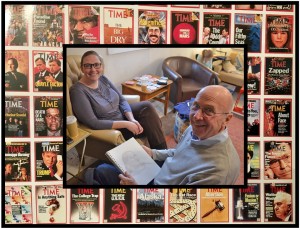
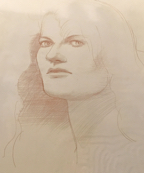
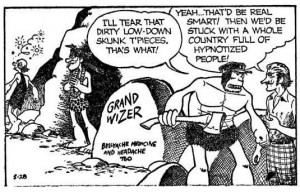
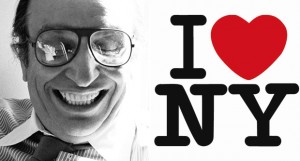

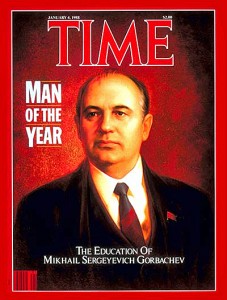
Terrific article, John. Thanks very much. I worked with Rudy a while ago when he was Creative Director of a large history magazine publishing company then headquartered in Leesburg. I’m an artist as well as a magazine editor, and Rudy took an immediate liking to my work. Reading your story makes me appreciate that all the more. Several times he mocked-up magazine covers using my paintings; one day I arrived at my office to find a postcard on my desk: the image side was a faux New Yorker cover built around one of my paintings; on the reverse, where the message and address would appear, was a “postage stamp” made of another of my paintings—the whole assembly a thank you note from Rudy for a minor favor. It’s sitting in eyesight on my desk now. Thank YOU for introducing our community to this talented gentleman.